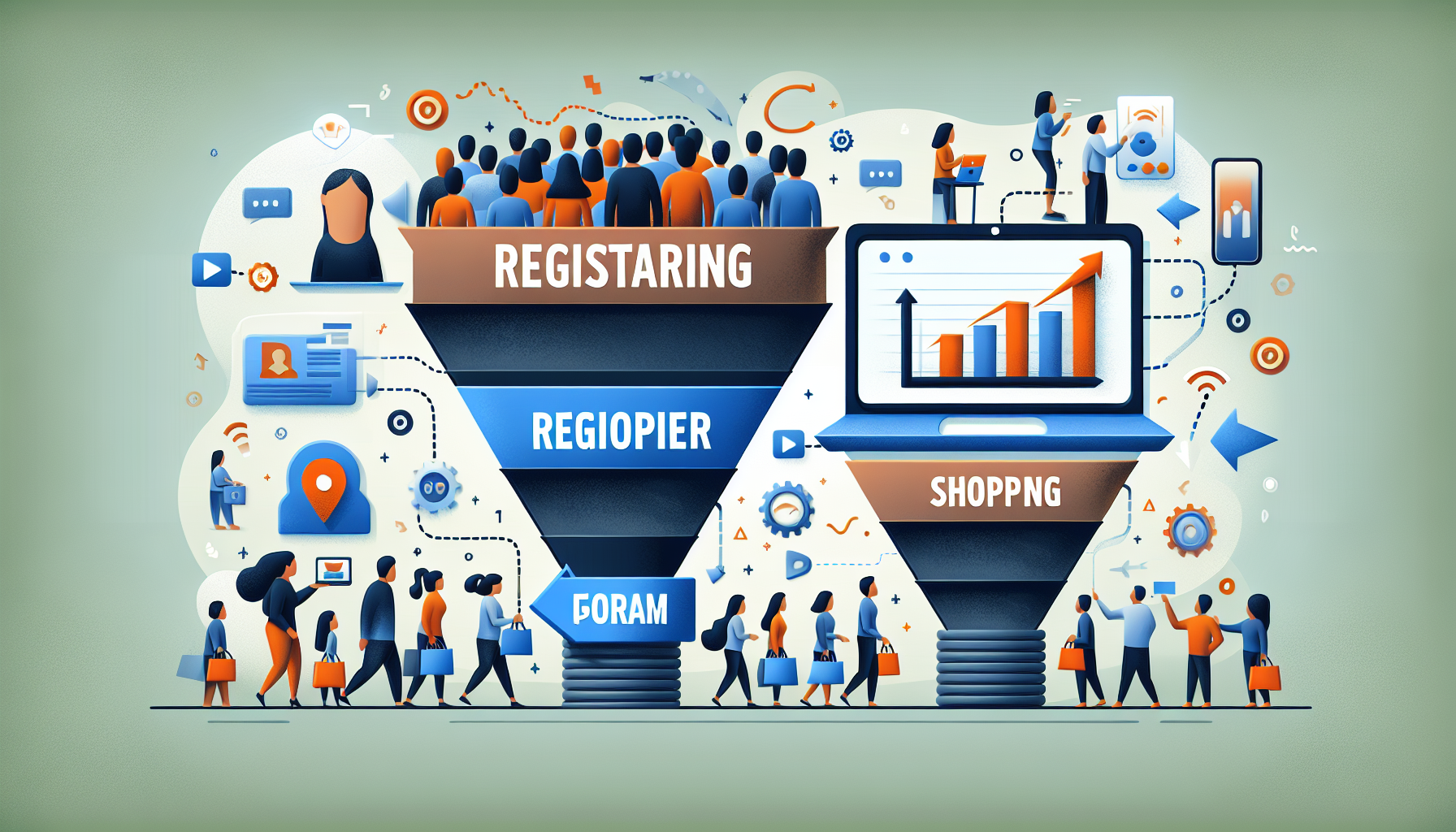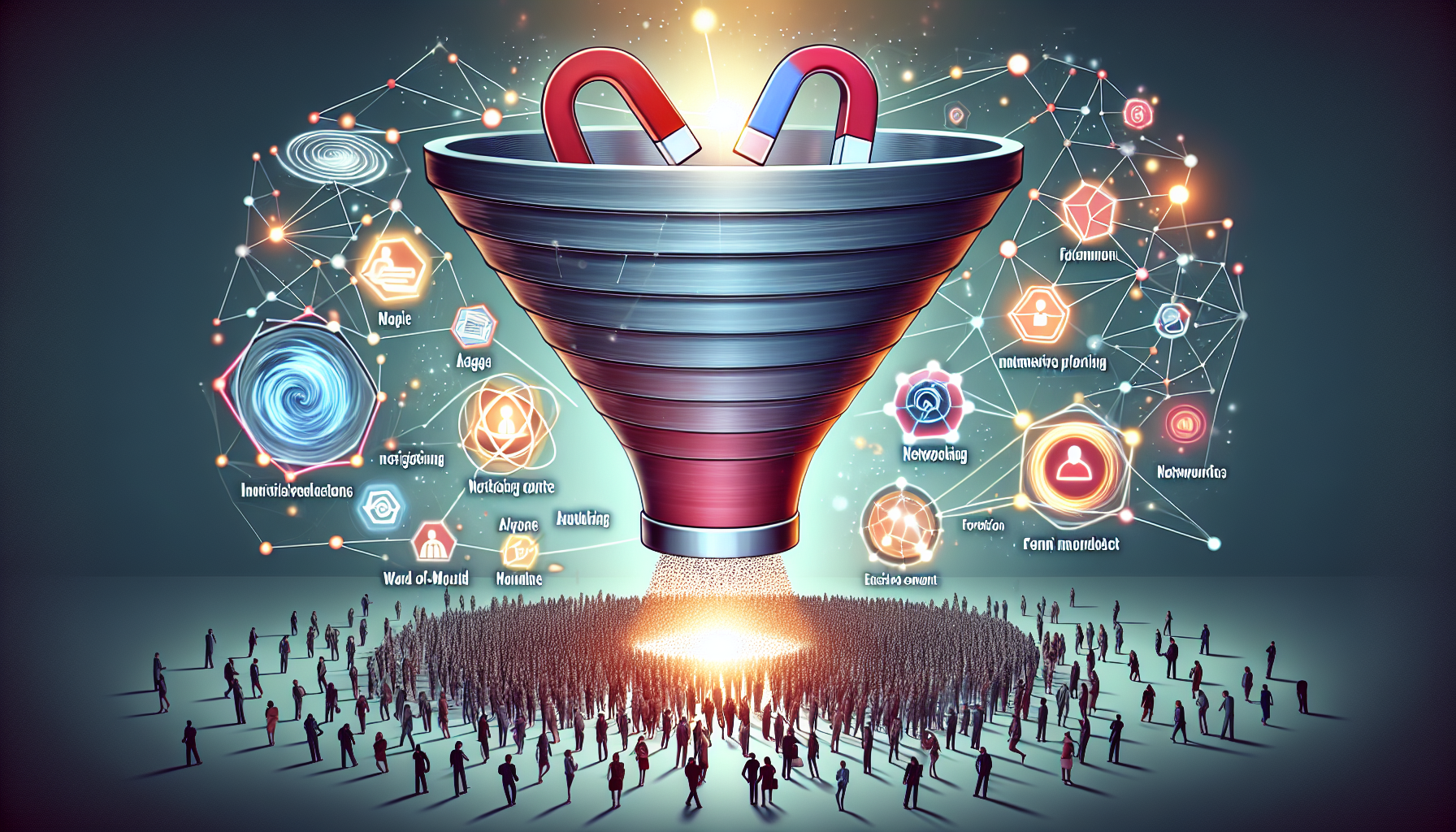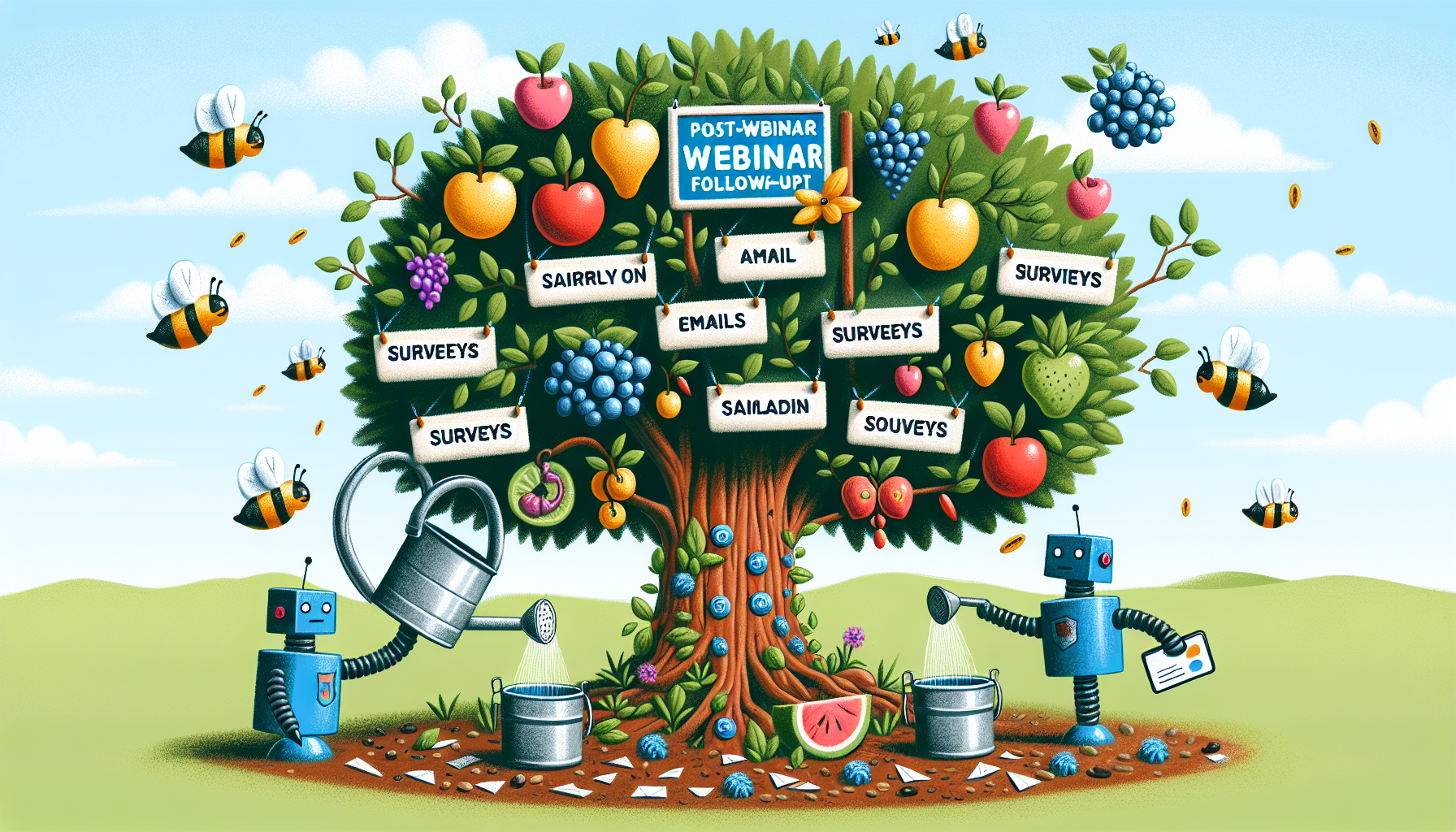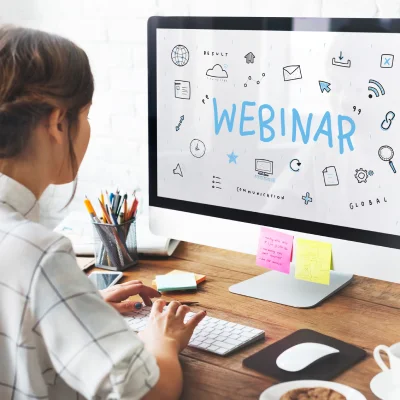Blog
Maximize Your Leads: Building an Effective Webinar Funnel that Converts
This article is designed to simplify the complex task of creating a webinar funnel that successfully turns participants into buyers. It will deliver practical steps for constructing a more evergreen webinar funnel which not only engages your audience but also motivates them to buy.
Key Takeaways
- Webinar funnels are highly effective for lead generation, with proper engagement and content leading to a substantial increase in high-quality leads for businesses.
- An engaging and interactive webinar experience, aligned with a carefully defined target audience, fuels lead nurturing and contributes to higher sales conversion rates.
- A strategic approach to webinar funnels—covering topic selection, crafting compelling content, promotion, and post-webinar follow-up—is essential for boosting attendance, engagement, and ultimately driving revenue.
The Power of Webinar Funnels

Webinar funnels are a highly effective tool for marketers, providing key benefits like lead generation and heightened brand awareness. These funnels are esteemed by numerous marketing and sales experts as prime vehicles for attracting quality leads, which underscores their importance in an effective marketing plan.
An automated webinar funnel that is meticulously crafted can elevate your company’s ability to generate leads and convert prospects into customers, positively influencing your profits. Creating a compelling and efficient automated webinar sales funnel, is essential to shepherd potential customers along the journey successfully.
Lead Generation
Webinars play a crucial role in the generation of leads, with a substantial proportion of participants turning into qualified prospects. Companies that incorporate webinars as part of their strategy can achieve up to 250% more leads than those who do not engage in such practices. Webinars offer educational material on pertinent subjects, which serves to draw in individuals who could potentially become new clients. As evidence of this effectiveness, between 20-40% of people attending webinars tend to become qualified leads.
In terms of digital marketing strategies, webinars stand out as powerful instruments for fostering lead conversion processes. These high-converting webinar funnels effectively nurture these potential customers and help them progress through various stages towards making a purchase decision. Consequently, if your goal is an enhancement in your lead generation activities, you should consider focusing on evergreen content when conducting webinars. Such subject matter allows for the creation of automated sessions that stay relevant over extended periods and provide opportunities for repurposing existing materials for ongoing use.
Audience Engagement
Webinars transcend mere content dissemination by integrating interactive elements such as Q&A, chat functions, and polls that help establish personal bonds and trust with participants. By employing a variety of webinar formats like live sessions, on-demand presentations, evergreen content, demonstrations, and educational showcases coupled with strategies including valuable educational resources provision—alongside tactics like teaser sharing for heightened engagement via email communication—audiences can be captivated in unique ways. Continued attendance at future webinars enables attendees to reap ongoing benefits from these dynamic interactions.
Rather than simply absorbing information passively during a presentation, audience members now anticipate an immersive experience featuring professional speakers who deliver high-quality content alongside opportunities for interaction through tools like real-time chats and question-and-answer segments. These avenues not only maintain attendee involvement but also facilitate instant response to inquiries thereby making individuals feel acknowledged and appreciated—a strategy which ultimately reinforces their affinity towards the event marketing strategy and the hosting brand.
Sales Conversions
Crafting an effective webinar funnel process can achieve several outcomes.
- Heightening participant numbers.
- Capturing fresh leads.
- Steering potential buyers along their purchasing path.
- Amplifying the profitability of each event.
By integrating instructive webinar content with key sales messages, companies have experienced a 40% increase in turning marketing-qualified leads into sales-ready ones.
To enhance your sales conversion rates through webinars, employing Calls to Action (CTAs) is a vital tactic. Here are various techniques you should consider.
1. Verbally deliver CTAs during the webinar and follow up by providing a link to your product or service offering.
2. Introduce additional selling opportunities such as upsells and downsells throughout the session for added revenue prospects.
3. Extend special price reductions and exclusive deals specifically to those attending the webinar.
These approaches can markedly propel financial gains within your webinar funnel operation.
Thus, refining your webinar funnel doesn’t just draw in new prospects, but also serves to transform them efficiently into patrons who actually purchase.
Essential Components of a High-Converting Webinar Funnel

Crafting a webinar funnel that efficiently converts involves meticulous preparation and implementation. The key elements of a fruitful webinar funnel include:
- Captivating content which seizes and sustains the interest of participants
- Pertinence to the target audience in terms of content presented
- Suitable calls to action (CTAs) that lead attendees toward subsequent actions, thereby fostering conversions.
To understand how these components play pivotal roles, let’s explore each aspect and its contribution towards crafting an effective webinar funnel.
Defining Your Target Audience
Identifying your target audience is crucial for the following reasons:
- It enables you to customize webinar topics and content, which increases engagement and simplifies the process of creating content
- Knowing who your audience is helps ensure that the content complements your products or services, enhancing sales potential
- You can meet or even exceed what participants expect from your webinar by aligning with their anticipated needs
To ascertain who constitutes your intended demographic, employ tools such as Google Analytics. These allow you to discover visitor demographics and interests on websites. Deploying surveys or conducting polls via social media channels like LinkedIn can yield valuable insights into the specific characteristics and preferences of those within this group. Having gained a profound grasp of who you’re addressing allows you to select a topic for the webinar that not only caters directly to their requirements but also addresses their individual challenges—offering solutions rich in value.
Crafting Compelling Content
Maximizing the impact of your webinar content requires that it not only aligns with the strategic objectives of your business, but also addresses the interests and needs of your audience. Employing a ‘Webinar Arc’ strategy can facilitate this by guiding webinar attendees from their current state to an enhanced situation after participating, ensuring that what is delivered resonates well with what they aspire to achieve.
In order to stimulate sales through webinars, providing educational material which audiences deem valuable plays a crucial role in attracting engagement towards both webinar topics and formats. The choice regarding how you choose to present — or format — your webinar has significant implications for shaping content that will captivate and maintain interest among prospective viewers. Determining the correct webinar format becomes essential in reaching out effectively to your intended demographic.
Choosing the Right Platform
Selecting the appropriate webinar platform is crucial for conducting smooth webinars that effectively engage and cultivate leads. The market offers a variety of options, such as:
- Livestorm
- Zoom
- Webex
- GoToWebinar
For high-quality, interactive webinars with adaptable features, platforms like Demio are often endorsed.
Demio stands out for its automated webinar capabilities and on-demand event hosting. Conversely, Livestorm supports sharing clickable calls to action (CTAs) directly during the presentation. When deciding on the right webinar platform, it’s important to consider your specific goals and needs—whether they entail real-time audience interaction or require the convenience of automated webinars.
Step-by-Step Guide to Building a Webinar Funnel

Let’s delve into the step-by-step guide for constructing a webinar funnel, taking you from choosing your topic right through to the post-webinar follow-up. This comprehensive process will demonstrate both the significance and elements involved in creating an effective webinar funnel.
Topic Selection and Goal Setting
The first step in setting up a successful webinar funnel is understanding your business objectives and the goals your webinar aims to achieve. By aligning your webinar topic with the audience’s interests, you can create a webinar funnel to ensure successful outcomes.
To determine a resonating topic, you can analyze top-performing content, social media engagement, and audience inquiries. Using the Jobs-To-Be-Done framework can help you develop webinar topics that center on audience goals and desired outcomes. Remember, a successful webinar topic is one that is targeted, measurable, and addresses the audience’s internal and external problems.
Designing an Attractive Landing Page
Your webinar landing page is the primary engagement point, providing potential attendees with their initial impression of your event and being essential in boosting sign-ups. The lead generation process heavily relies on how clear and visually appealing this page is.
To ensure that your webinar landing captures the interest of prospective participants, it should be attractive, user-friendly, and conversion-focused. Keep the registration form on your webinar platform simple to avoid discouraging would-be registrants. Leveraging features such as custom fields available within the platform and conducting A/B testing can aid in enhancing the conversion rate for your landing page.
Promoting Your Webinar
Maximizing the number of leads and ensuring high attendance starts with directing potential participants to your webinar registration page. Offering a free webinar is an effective way to entice more traffic to this landing page, setting the stage for converting visitors into leads. You can employ several tactics to promote your webinars including:
- Utilizing Facebook ads
- Implementing Google paid ads
- Optimizing for search engines (SEO)
- Leveraging email marketing campaigns
- Creating compelling content marketing pieces
- Writing guest blogs
- Engaging organically on social media platforms
- Retargeting audiences through tailored advertisements
By adding banners or pop-ups featuring countdowns on your website, you instill a sense of urgency that compels people toward your webinar landing space. Dispatching emails that remind attendees about the event and sharing worthwhile content before it happens can play pivotal roles in motivating registered individuals to join the session thus enhancing the overall rate of participation in webinars.
Hosting a Memorable Webinar

To ensure your webinar is impactful and unforgettable, it’s important to captivate your audience with valuable insights that linger in their memory. Employing diverse formats such as interviews, Q&A sessions, panel discussions, or presentations can align well with the content you’re delivering while keeping the participants engaged.
Interactive features like polls and quizzes or inviting attendees to take part actively can greatly enhance engagement throughout the webinar session. To set yourself up for success before going live on a webinar platform:
- Develop a structured outline of the material
- Prepare visual aids like slide decks beforehand
- Check that all technical aspects of the webinar software are functioning properly to avoid any glitches during transmission.
Implementing Calls to Action
At the conclusion of a webinar, it is crucial to employ Calls to Action (CTAs) to guide participants towards the subsequent phase in the funnel, encouraging them based on the insightful content shared. It’s important that CTAs are presented after value and trust have been built with attendees.
For CTAs to seem organic rather than pushy within a webinar’s progression, they should be intimately connected with its subject matter. Platforms specialized in webinars such as Hubilo support powerful CTAs by enabling hosts to dispatch clickable options directly through the interface of the webinar. This feature also includes personalization capabilities for text appearance, button styling, and linking URLs.
Post-Webinar Follow-Up

Maintaining contact with participants post-webinar is essential to keep their interest alive and forge stronger connections. A thank you note to registrants for the webinar can create an enduring favorable impression, which improves their experience.
Offering a replay of the webinar serves those who missed the live event and positively reinforces brand awareness. Tailoring follow-up emails with important takeaways and insights from the webinar encourages attendees to stay involved and engaged with your content.
Leveraging sophisticated automation for automated webinar replays by sending two or three reminder emails can greatly boost viewer involvement, fostering lead development that may culminate in sales conversions.
Analyzing and Optimizing Your Webinar Funnel
It is essential for the effectiveness of your webinar funnel to monitor crucial metrics and pinpoint potential improvements. By conducting this analysis, you can make informed modifications that will bolster overall performance and outcomes.
Key Metrics to Track
By measuring impressions and clicks at every stage of the webinar funnel, built-in tracking tools offer a clear picture of its visibility and engagement. Implementing Event Tracking. Pixels yields valuable insights by pinpointing where potential clients are leaving the funnel, highlighting which sections might need refinement.
Grasping these metrics equips you with the ability to assess your webinar funnel’s effectiveness precisely. Through vigilant monitoring of these essential indicators, you can extract crucial information about how well your webinar is performing and identify specific elements that could be enhanced in order to fine-tune your strategy for improved outcomes.
Identifying Areas for Improvement
Analyze the data from analytics reports to pinpoint where potential customers are disengaging or exiting within the funnel. Should there be a significant decline in user engagement at the sales page, it’s critical to scrutinize possible problems related to pricing, deals, or how well your product aligns with market demands. Consider implementing specific changes or motivations that could remedy these shortcomings.
Focusing on detecting and rectifying weaknesses can significantly boost your webinar funnel’s effectiveness. This approach will not only maintain an efficient webinar funnel, but also sustain its capacity for garnering high-caliber leads and facilitating increased rates of sales conversions.
Summary
To sum up, the strategic use of webinar funnels can significantly enhance lead generation and sales conversions for companies. Ensuring every element of a successful webinar funnel is meticulously designed and implemented—ranging from choosing engaging topics, crafting compelling content, to conducting the webinar itself and executing an effective post-webinar follow-up—you can develop a high-converting funnel that captivates your audience and boosts your sales. Why wait? Begin organizing your upcoming successful webinar today!
Frequently Asked Questions
Key Metrics to Track
Certainly, with Metaforma you have the capability to craft and facilitate live webinar events.
This tool simplifies the process by integrating registration gathering, conducting the actual webinar, and offering a product within a singular funnel system. Feel free to utilize this function fully for your enterprise!
Why are webinars effective for lead generation?
Webinars serve as a potent tool for lead generation due to their ability to offer informative content on pertinent subjects. This draws in prospective customers and aids in steering them towards conversion actions.
Consequently, webinars stand out as an exceptional instrument for generating leads.
How can I make my webinar more engaging?
Consider enhancing the engagement of your webinar by integrating interactive features such as audience polls, quizzes, and opportunities for participant involvement. Ensuring that the content delivered is both valuable and aligns with what piques your audience’s interest or addresses their needs can Increase engagement.
Implement these suggestions to elevate the interactivity and captivation of your webinar experience!
What are the key components of a high-converting webinar funnel?
The essential elements for a webinar funnel that successfully converts include captivating material, its significance to the viewers, and persuasive calls to action that encourage conversions.
To enhance the effectiveness of your webinar funnel, it’s crucial to concentrate on these aspects.
How can I promote my webinar to attract more attendees?
Utilize a range of tactics including Facebook advertisements, paid Google ads, search engine optimization (SEO), content marketing, guest blogging, and natural social media engagement to increase the number of participants for your webinar. Instilling a feeling of immediateness by incorporating timers and countdowns on your site can enhance visitor flow to the webinar landing page. Email marketing is another powerful tool that should be used in conjunction with these strategies to boost attendance at your event.

